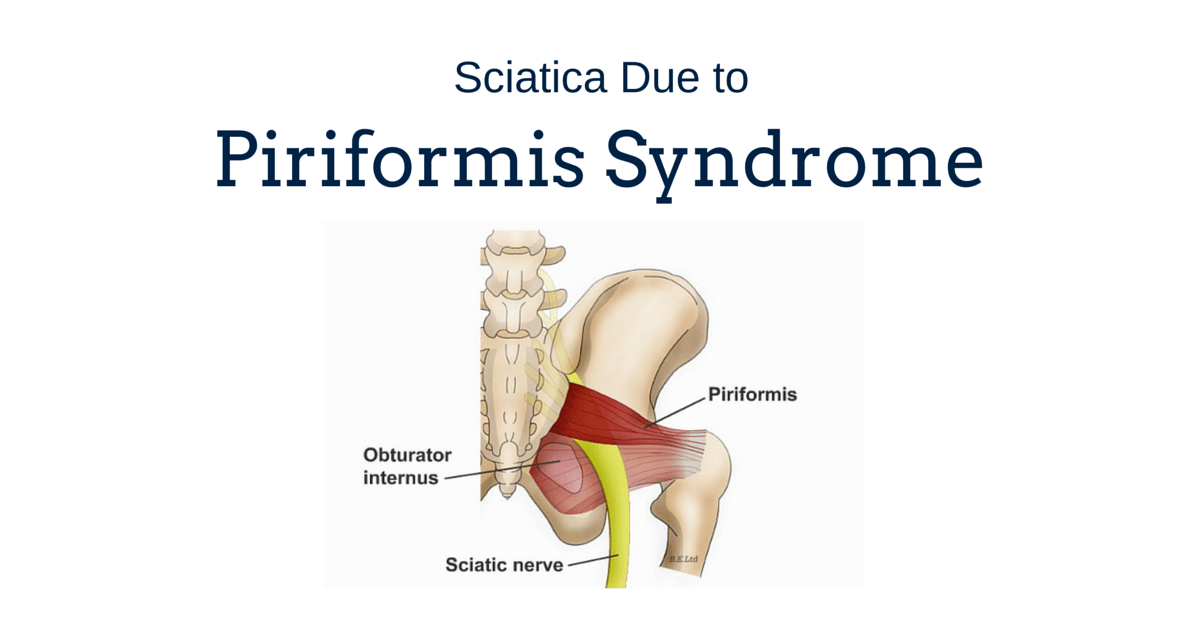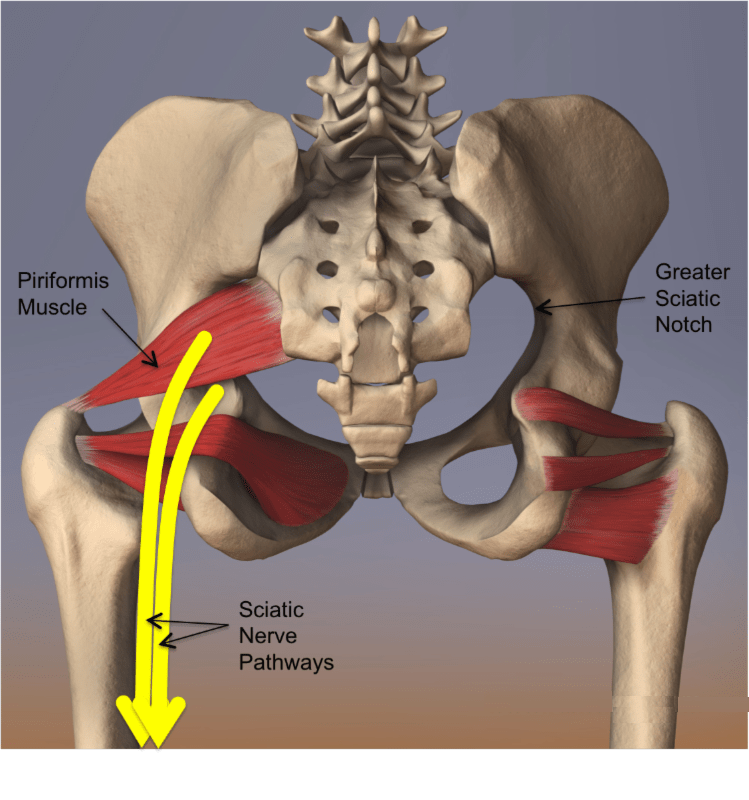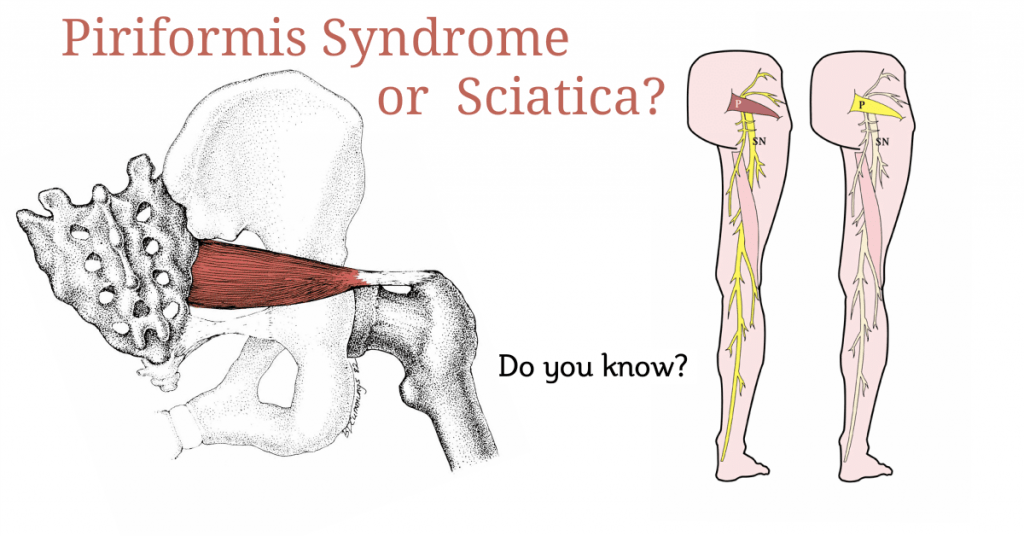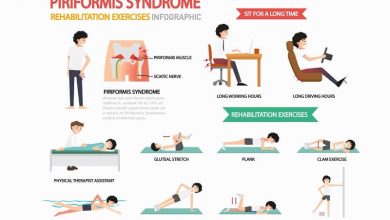Sciatica and Piriformis Syndrome

Piriformis Syndrome refers to deep-seated pain in the hip and buttocks that cannot be attributed to any other condition. Some doctors say that, as a specific condition, it doesn’t exist but the many sufferers of this painful and debilitating condition are not convinced.
The name ‘piriformis syndrome‘ is taken from the muscle in the hip region which called the piriformis muscle. This is a relatively small muscle that lies behind the hip and helps in the action of turning the leg out; this action is referred to as external rotation.

The tendon of the piriformis muscle, where it attaches to the sacral spine, crosses the path of the sciatic nerve. It is believed that the piriformis tendon can create pressure on, aggravate or inflame the sciatic nerve at this point, causing pain in the buttocks or hip. The theory is that this irritation occurs when the piriformis muscle is tight, as happens with many people who have sedentary occupations.
Another cause of the piriformis syndrome is spasm of the muscle which can be the result of injury while exercising. The condition is particularly associated with activities that involve running and changes of direction, especially when running on hard or uneven ground. People who return to heavy exercise or increase the intensity of their activity too soon are also liable to suffer this condition.
The pain associated with piriformis syndrome is usually described as a deep ache in the hip or buttocks, often only on one side. However, this type of pain, in this area, could also be caused by sciatica, herniated disc, tendonitis or spinal stenosis. When these causes have been eliminated, a diagnosis of piriformis syndrome is often made.

To further confirm the diagnosis, the upper leg may be manipulated to isolate the piriformis muscle’s function and to discover if the pain is in the region of the piriformis tendon. Other symptoms include pain in the lower back or leg, stiffness and difficulty of movement. Some patients experience numbness or tingling in the feet and legs.
Having made a firm diagnosis of piriformis syndrome, the doctor has several treatment options. If the symptoms have been caused by specific activities, resting or avoiding these activities for a few weeks will usually allow the pain to subside. Anti-inflammatory medication can also be prescribed to relieve the irritation of the sciatic nerve caused by the piriformis tendon.

Massage therapy is another treatment option as deep massage by a trained therapist can relieve the pressure on the sciatic nerve. Possibly the most effective long-term treatment is physical therapy, supervised and assessed by a physiotherapist or exercise physiologist. The physical therapy will focus on stretching the muscles of the hip and thigh, particularly the piriformis, and strengthening the muscles that rotate the hip.
The options for treatment of piriformis syndrome are fairly general in nature and treatment may not always be effective in the long-term. This is a condition that can be difficult to get a full recovery. Surgery to loosen the piriformis tendon is considered a last resort treatment and is only considered if the symptoms are severe and haven’t responded to lengthy treatment by other methods.
The best way to prevent piriformis syndrome is to make certain you warm up properly before any exercise or strenuous activity and to stand up, stretch and walk around regularly if you need to be sitting for extended periods of time.





